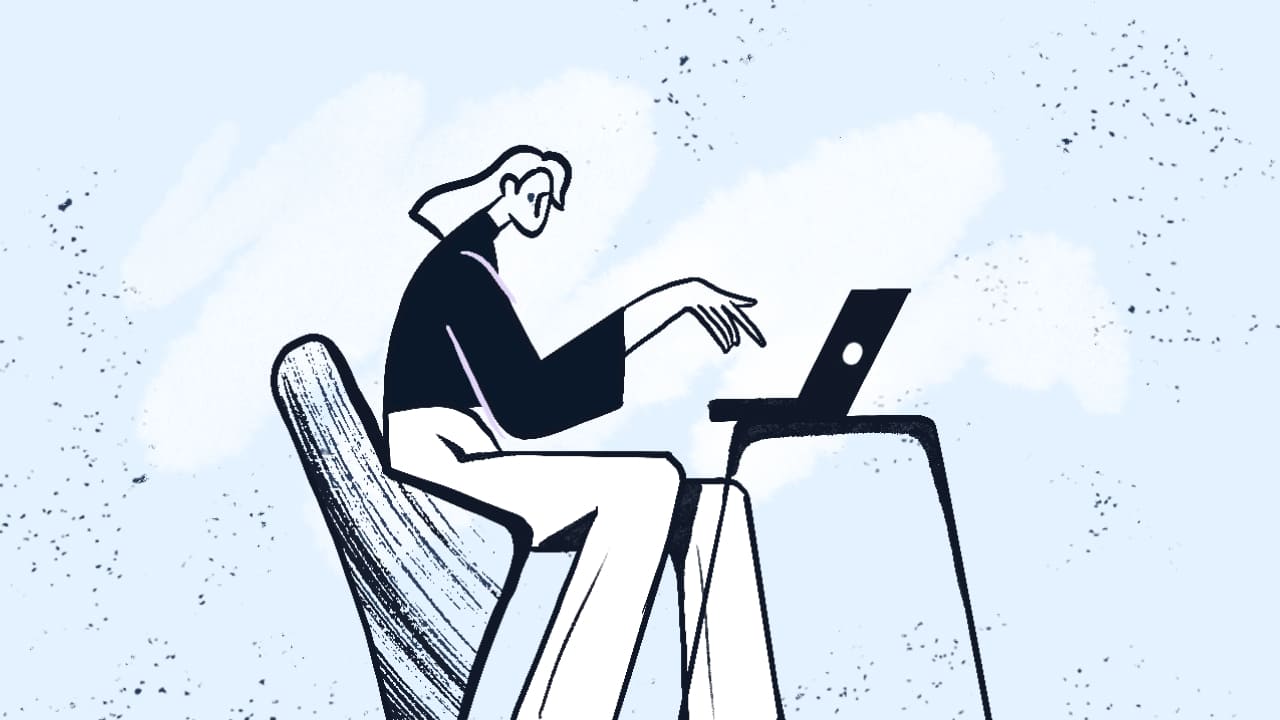Information Technology Management (IT Management) is all about planning, organizing, and overseeing an organization's tech resources. In a nutshell, it's the art of managing IT to keep everything running smoothly while supporting business goals.
There’s a lot to unpack when it comes to IT Management — it’s a broad concept that covers everything from delivering reliable services to managing budgets and setting governance policies. In this post, we’ll break down what it really means, explore its key disciplines, look at what IT managers do, and go over the main tasks involved.

What is IT Management?
IT Management is the practice of overseeing and coordinating an organization’s technology resources to meet its needs and goals. It includes everyday tasks like budgeting, staffing, and tech support, along with more strategic efforts like network planning, software development, and managing changes.
The ultimate goal? Creating value through technology. That means aligning IT initiatives with business strategy, ensuring that every tech decision helps the organization move forward. It’s not just about managing tools — it’s about making tech work for the business.
IT Management disciplines
Effective IT Management encompasses a wide range of disciplines that collectively support an organization’s digital infrastructure. Let's break down the key components that play a part in effective IT Management:
1. IT Service Management (ITSM)
At its core, IT Service Management (ITSM) is about ensuring that IT services align with the needs of end users. It includes processes for delivering and managing tech services, such as service requests, Incident Management, and Change Management. By focusing on high-quality service delivery, ITSM directly impacts customer satisfaction and internal workflow, making it a crucial pillar of IT Management.
A successful ITSM practice standardizes how services are delivered, ensuring that they are reliable and consistent. This leads to improved productivity, fewer disruptions, and a better overall experience for everyone involved.

2. IT Asset Management (ITAM)
IT Asset Management (ITAM) involves tracking, managing, and optimizing technology assets throughout their lifecycle. From hardware like laptops and servers to software licenses, ITAM helps organizations avoid redundant purchases, control costs, and improve compliance. Effective ITAM also supports security by ensuring that assets are properly configured and maintained.
This focus on assets prevents overspending and enables proactive planning for future purchases, further contributing to a leaner, more agile IT environment.

3. Business Management
Business Management is about strategically aligning IT resources to support company goals. By ensuring that IT decisions align with business objectives, companies can drive growth more effectively. This connection allows for strategic investments in technology that help achieve broader business goals, like expanding into new markets or developing innovative products.
It’s a critical component that enables IT leaders to make informed decisions that propel the organization forward, balancing innovation with practicality.
4. DevOps
DevOps bridges the gap between development and operations, creating a seamless flow between coding, testing, and deployment. This practice speeds up development cycles, allowing companies to respond quickly to market demands. DevOps eliminates bottlenecks and promotes teamwork, resulting in faster innovation and reduced time to market.
Incorporating DevOps into IT Management brings a cultural shift that emphasizes collaboration and constant improvement, ultimately benefiting the entire organization.

5. Security operations
In today’s digital world, cybersecurity is non-negotiable. Security operations within IT Management ensures that all assets are protected from potential threats. This includes implementing firewalls, monitoring networks, and responding to incidents. By prioritizing security, Information Technology Management safeguards the organization’s data and minimizes risks associated with cyberattacks.
Cybersecurity operations involve proactive monitoring and response, making it a critical part of a resilient IT Management strategy.
6. Operations Management
Operations Management involves optimizing daily IT functions, such as system maintenance, backup procedures, and user support. By improving operational efficiency, IT teams can minimize downtime and reduce the likelihood of issues arising. This aspect of IT Management is about ensuring that every component functions smoothly so that the organization can operate without disruptions.
Through effective Operations Management, organizations create a robust and reliable foundation that supports business continuity.
7. Risk Management
Risk Management identifies potential vulnerabilities within IT operations and works to address them. This practice is essential for managing uncertainties and ensuring that risks are minimized. By focusing on Risk Management, organizations can be better prepared for incidents, ensuring that they have a response plan in place.
Risk Management adds an extra layer of security and prepares companies for unexpected events, reinforcing resilience.

Why should organizations care about IT Management?
Effective Information Technology Management is crucial for organizations aiming to harness technology to drive success. By strategically overseeing IT resources, businesses can ensure their technological investments align with and support their overarching goals. These are the main benefits of IT Management:
- Enhanced efficiency: Streamlining IT operations reduces downtime and optimizes workflows, leading to smoother business processes.
- Cost savings: Proper IT management helps in identifying cost-effective solutions and eliminating unnecessary expenditures.
- Improved decision-making: Access to accurate and timely information enables better strategic planning and responsiveness to market changes.
- Robust security: Implementing strong IT governance minimizes risks associated with data breaches and ensures compliance with regulatory standards.
- Competitive advantage: Leveraging technology effectively allows organizations to innovate rapidly and respond swiftly to industry trends, keeping them ahead of competitors.
Investing in solid IT Management practices not only supports current operations but also positions organizations for sustainable growth in the evolving digital landscape.
Challenges in the IT Management process
Managing Information Technology effectively is essential for organizations, but it’s not without its hurdles. And let me tell you, the consequences of getting it wrong can be massive.
Just take the 2013 Target breach as an example. Despite having a $1.6 million malware detection system in place, the company failed to act on its alerts. The result? Hackers stole data from over 100 million customers, leading to lawsuits and tens of millions in damages.
This real-world case shows just how critical IT Management really is—not just the tools, but the people and processes behind them. Here are some of the most common challenges organizations face in the IT management process:
- Cybersecurity threats: As cyberattacks become more sophisticated, protecting sensitive data and systems is a growing challenge.
- Outdated infrastructure: Legacy systems can slow down operations and make it harder to integrate new technologies.
- Resource constraints: Tight budgets and limited staff often force IT teams to do more with less.
- Skill gaps: Keeping up with rapidly evolving tech requires ongoing training and hiring the right talent.
- Change Management: New tools and processes often face resistance—communication and training are key.
- Data Management: The explosion of data requires strong governance to ensure quality, compliance, and accessibility.
- Shadow IT: Unauthorized tools used by employees can create security risks and data silos.
Overcoming these challenges takes a proactive, strategic approach—and it all starts with solid IT Management.
What does an IT manager do?
An IT manager is responsible for leading IT initiatives and ensuring that technology meets the organization’s strategic needs. They oversee teams, manage projects, and ensure that infrastructure runs smoothly. By coordinating across departments, IT managers play a pivotal role in keeping the technology aligned with business goals, making them indispensable to a well-functioning organization.
These leaders often juggle strategic planning, budgeting, and problem-solving, acting as the bridge between technical teams and executive leadership.
IT Management tasks
Managing IT involves a wide range of responsibilities. Here are some of the core tasks IT managers typically handle:
- Developing IT strategies aligned with business goals.
- Managing IT budgets and controlling costs.
- Supervising IT teams and external vendors.
- Overseeing network and infrastructure operations.
- Implementing and maintaining software and systems.
- Monitoring performance and uptime.
- Ensuring cybersecurity and data protection.
- Coordinating with other departments to support tech needs.
- Managing IT projects and rollouts.
- Creating and enforcing IT policies and governance frameworks.
In conclusion
IT Management is much more than just keeping systems running — it’s about aligning technology with business goals to drive real value. From strategic planning to day-to-day operations, it plays a central role in shaping how organizations function, grow, and stay competitive.
By understanding its disciplines, recognizing common challenges, and knowing what IT managers actually do, organizations can take a more thoughtful and proactive approach to managing IT. In a fast-changing digital world, solid IT Management isn’t optional — it’s essential.















